-
1 of 253523 objects
The Sea Triumph of Charles II c.1674
224.5 x 231.0 cm (support, canvas/panel/stretcher external) | RCIN 406173
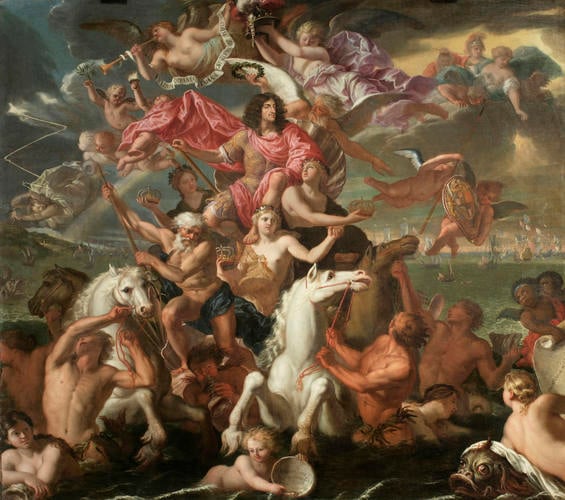
Antonio Verrio (c. 1639-1707)
The Sea Triumph of Charles II c.1674

Antonio Verrio (c. 1639-1707)
The Sea Triumph of Charles II c.1674
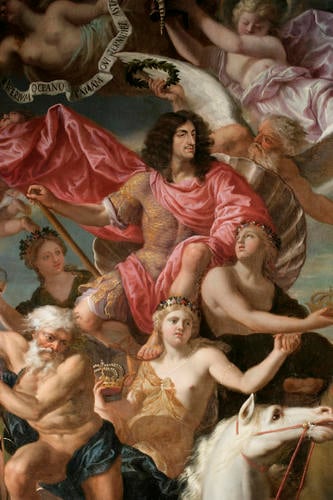
Antonio Verrio (c. 1639-1707)
The Sea Triumph of Charles II c.1674
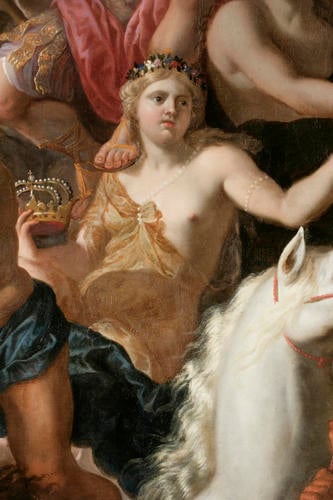
Antonio Verrio (c. 1639-1707)
The Sea Triumph of Charles II c.1674
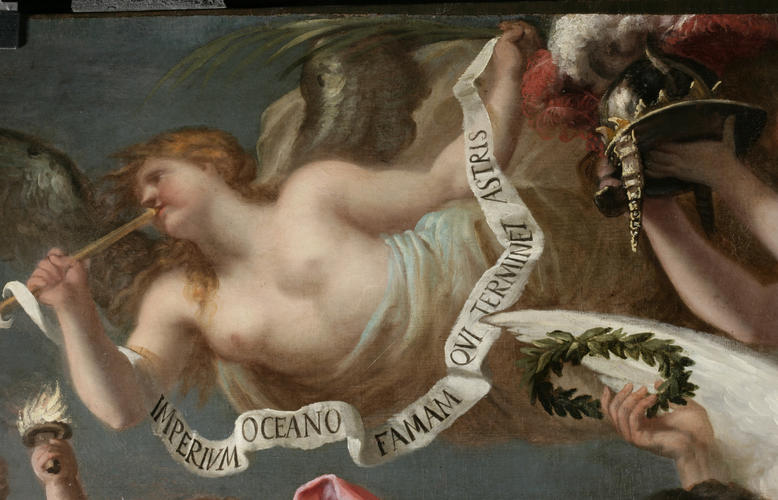
Antonio Verrio (c. 1639-1707)
The Sea Triumph of Charles II c.1674
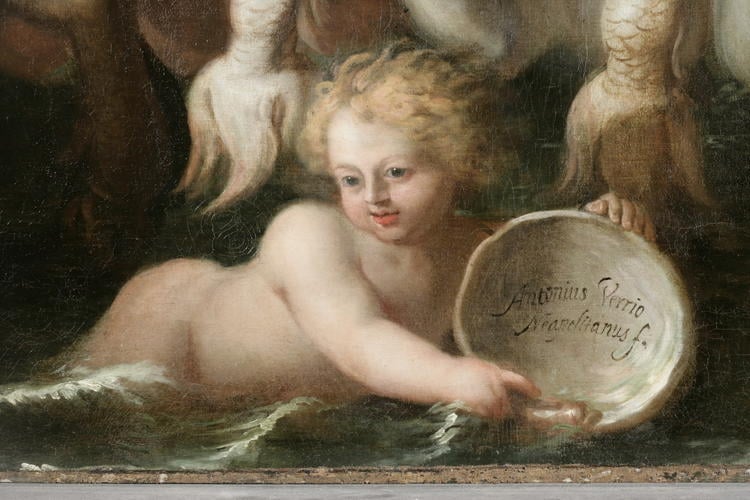
Antonio Verrio (c. 1639-1707)
The Sea Triumph of Charles II c.1674
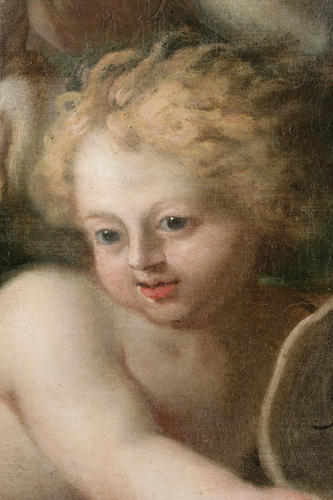
Antonio Verrio (c. 1639-1707)
The Sea Triumph of Charles II c.1674







-
This was the first work painted for Charles II by Antonio Verrio, and is believed to have been a trial piece, allowing the artist to demonstrate his talents to his potential royal patron. By this date, c.1674, Verrio had already produced decorative schemes for a number of figures at court, including the Earl of Arlington at both Euston Hall in Suffolk and Arlington House in St James's Park. It was at Arlington House – the site of Buckingham Palace today, that the artist was first introduced to his future royal patron, who 'came in his walks round the Park to see the Workes Verrio was doing there'.
The subject was perhaps inspired by the signing of the Treaty of Westminster on 9 February 1674, ending the Third Anglo-Dutch War. This was considered a victory for Britain, the Dutch having conceded the supremacy of the seas.The portrait of the King does not seem to be taken from life and was probably worked up by Verrio from a miniature by Samuel Cooper.
The King, wearing classical armour, is driven through the water by Neptune in a high, shell-backed chariot. He is accompanied by three female figures carrying crowns and embodying his three kingdoms. Above his head Fame holds a scroll inscribed IMPERIVM OCEANO FAMAM QVI TERMINET ASTRIS ('Let the boundary of his empire be the ocean and the limits of his fame be the stars'). Time and a female figure hold a wreath and a helmet above his head. In the sky Envy is struck by lightening and chased by putti with the attributes of Peace and Love, and two more putti carry the royal arms on a shield. Beyond are Minerva and Venus looking down on the British fleet below, including a warship flying the royal standard.
Verrio's painting was evidently a success – the artist was denizened the following year and soon commissioned to decorate the new state apartments at Windsor Castle. In 1684 Verrio was appointed to the position of 'Chief First Painter' to the king, with a salary of £200 per year. By 1688 this painting was at Whitehall ('A sea triumph, being a large piece with king Charles the Second in it'), hanging in the Second Privy Lodging Room alongside portraits by Tintoretto (1519–94) and Rubens, and between two mythological paintings by Giulio Romano (c.1499–1546).
Signed: Antonius Verrio / Neapolitanus f.[Antonio Verrio from Naples did this]
Text adapted from Charles II: Art and Power, London, 2017.Provenance
Painted for Charles II; recorded in the 2nd Privy Lodging Room at Whitehall in 1688 (no 57); in the King's Eating Room at Windsor Castle from 1710 (no 25) at least until 1792
-
Medium and techniques
Measurements
224.5 x 231.0 cm (support, canvas/panel/stretcher external)
208.0 cm (support (etc), excluding additions)
256.5 x 246.3 x 10.0 cm (frame, external)
Category
Object type(s)
Other number(s)
Alternative title(s)
The Apotheosis of Charles II, previously entitled